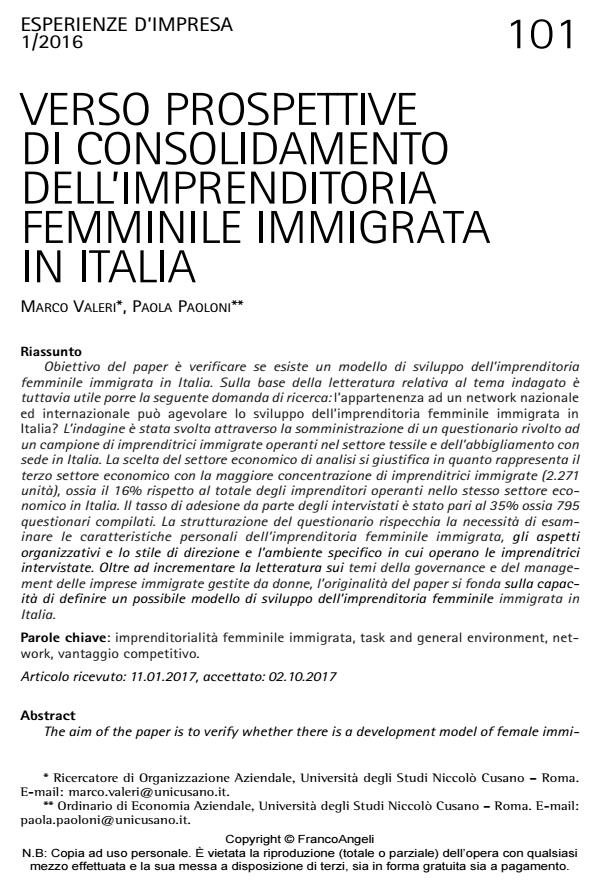Verso prospettive di consolidamento dell’imprenditoria femminile immigrata in Italia
Journal title ESPERIENZE D'IMPRESA
Author/s Marco Valeri, Paola Paoloni
Publishing Year 2018 Issue 2016/1
Language Italian Pages 24 P. 101-124 File size 181 KB
DOI 10.3280/EI2016-001006
DOI is like a bar code for intellectual property: to have more infomation
click here
Below, you can see the article first page
If you want to buy this article in PDF format, you can do it, following the instructions to buy download credits

FrancoAngeli is member of Publishers International Linking Association, Inc (PILA), a not-for-profit association which run the CrossRef service enabling links to and from online scholarly content.
The aim of the paper is to verify whether there is a development model of female immigrant entrepreneurship in Italy. In addition to the existing literature on the topic, it is useful l to ask the following research question: can being a member in a national and international network facilitate the development of female immigrant entrepreneurship in Italy? The survey was carried out through the administration of a questionnaire addressed to a sample of immigrant entrepreneurs working in the textile and clothing sector based in Italy. The choice of the economic sector of analysis is justified as it represents the third economic sector with the highest concentration of immigrant entrepreneurs (2,271 units), that is 16% compared to the total number of entrepreneurs operating in the same economic sector in Italy. The rate of participation by the interviewees was 35% or 795 filled out questionnaires . The structure of the questionnaire reflects the need to examine the characteristics of personal immigrant female entrepreneurs, organizational aspects and style of direction and the specific environment in which the interviewed entrepreneurs operate. In addition to increasing the literature on the issues of governance and management of immigrant companies run by women, the originality of the paper is based on the ability to define a possible development model of female immigrant entrepreneurship in Italy.
Keywords: Female immigrant entrepreneurship, task and general environment, network, competitive advantage
- Shaping Tomorrow Alejandra Sevilla-Guzmán, Veronica Procacci, pp.295 (ISBN:978-3-031-78998-4)
Marco Valeri, Paola Paoloni, Verso prospettive di consolidamento dell’imprenditoria femminile immigrata in Italia in "ESPERIENZE D'IMPRESA" 1/2016, pp 101-124, DOI: 10.3280/EI2016-001006